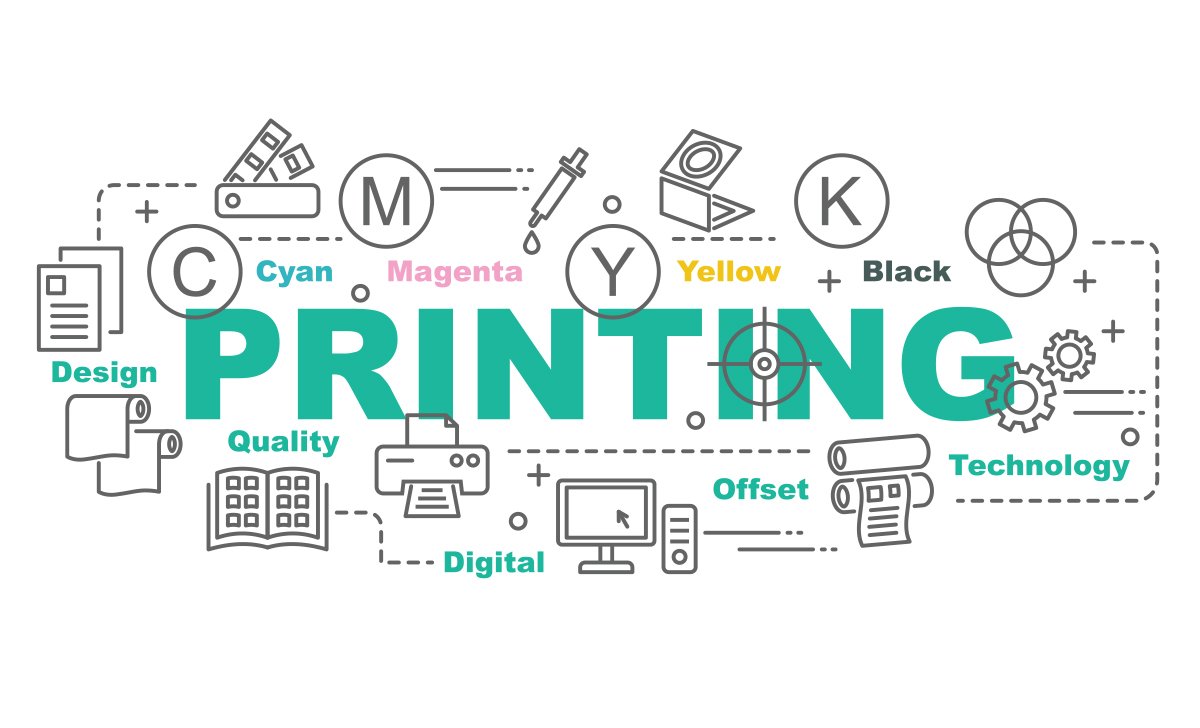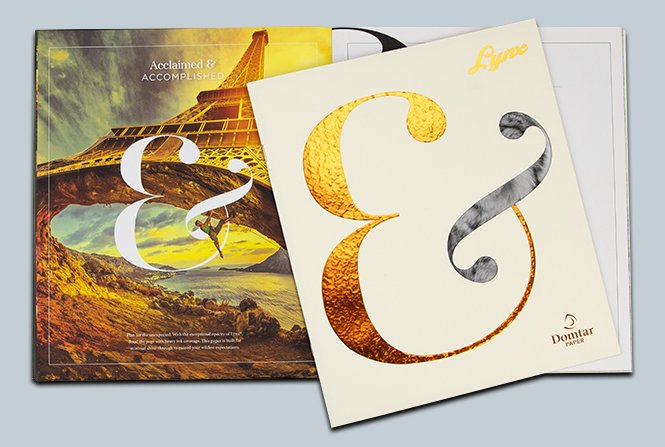When it comes to papers for commercial printing, most designers think in terms of traditional offset lithography. Up until 10 years ago that was perfectly fine, except for the shift to digital printing. These days, print runs are smaller, making digital printing the go-to method for a lot of print projects these days. The thing is, many designers don’t consider the printing equipment used before they specify the paper. This can cause a last minute scramble to find an alternative paper. To avoid this scenario, here are some tips on specifying paper for various printing equipment.
Offset Lithography
Offset, as it’s often called, will give you the broadest range of substrate options for commercial printing. The paper mills all manufacture products guaranteed to perform well for offset. While there may be certain considerations regarding the type of paper used given the print specs and quality of the printer, in general you can feel confident about specifying any of the papers you see offered in a mill’s swatchbook.
With that being said, you should consult the swatchbook to make sure the paper you want to use actually exists. I know this sounds silly, but you would not believe how often designers assume that just because a color/finish/basis weight is shown on the main waterfall of a swatchbook that ALL combinations are available in every color. Umm, no.
Digital Printing
I’m going to be honest, this is a loaded one. Depending on the OEM (original equipment manufacturer), paper recommendations will vary. When we talk about digital printing in a commercial printing environment, it usually means digital production color (not desktop printer).
As a general rule of thumb, you want to look for a paper that is made for digital printing. This is when I live and die by the swatchbook. Refer to the stock guide of the swatchbook (the grid layout in most swatchbooks sometimes hidden under the waterfall). You should see an icon that connotes digital papers–some swatchbooks even have their own tabbed digital section. There will be limitations here, mainly around basis weight and finish, size and color is more specifically based on the actual equipment and its requirements.
When we talk about weights with digital printing, what really matters is the thickness (caliper) of the paper. Whereas offset lithography is all about basis weight (ex.100# Cover), digital printing is all about the GSM (ex.270 gsm). Most digital equipment will run thicknesses between 60 – 350 gsm, but it really depends on the equipment used.
A creative I know designed some pretty fab business cards, she only needed 500 of them and was going to have them digitally printed. She wanted a really thick card and specified 200# Cover only be extremely disappointed when she found out it wouldn’t work. The client loved the mock-up she had on the 200# Cover, so when she got her cards on 120# Cover instead (even though she signed off on it) you can imagine her disappointment.
Due to the nature of digital printing technology, mainly toner and heat, paper finish can be an issue. By finish, I mean texture. In general, the smoother the finish the more compatible it will be for digital printing. Heavier textured finishes like felt may be approved for digital printing, but depending on the printer and equipment (and basis weight), it might not always work. Again, check the swatchbook to make sure the finish is guaranteed for digital printing. I also think it’s a good idea to test paper samples on the equipment being used to make sure. A good printer will be happy to do this for you, they want to the job to work as much as you do.
In terms of size designers will find some limitations, especially regarding bleeds. In general, it’s a good idea to plan for a limitation for .125” – .25” around the edge of the sheet (although that can vary by OEM). While the size range of digital papers is constantly expanding based on improvements in technology, the average sheet today tends to be a 13” x 19.” I would definitely suggest asking your print rep what the max sheet size is they run on their specific digital equipment.
When it comes to color and digital printing, it’s not so much that the actual color of the paper can pose a problem, it’s the technology of the equipment itself that can be tricky.
For example, I produced some holiday cards on a range of colored papers, including a navy blue, on an HP Indigo 10000. I wanted to take advantage of the Indigo’s white ink capability and thought the navy blue sheet would a perfect combo. The only issue was the weight I wanted to use was not compatible with the HP Indigo. I thought, what’s the big deal? The white paper in that grade with the same basis weight was approved. Well, in order for the digital equipment to actually read the paper to feed it through the press, dark stocks need to have a white strip on them. Who knew? Luckily I tested ahead of time and made sure to order the HP Indigo compatible stock as offered in the swatch book.
Paper samples are always a good idea, especially when it comes to understanding new print technology.
Offset Web
Generally speaking, since offset web is used for larger runs (think tens of thousands), most of the paper specified for this equipment will be making items. You will find some standard papers that are stocked items in web rolls. Your best bet is to call your merchant rep as soon as you begin working on the project – they can do all the prep work for you. Just know if you want to specify a paper with certain attributes, like post-consumer waste or FSC, these will likely be making items. The biggest issue with specifying papers for offset web is going to be lead time. Your paper rep and printer will handle all this, but know that if you want a very specific paper you should factor 4 – 6 weeks into your timeline.
High-Speed Digital Inkjet
High-speed digital inkjet is a printing technology quickly gaining momentum in the marketplace. The learning curve on paper selection and designing for inkjet is steep, but luckily a designer will more than likely know if they’re creating a design that will be printed on an inkjet machine at the onset of the project. When choosing a paper for your inkjet project, collaboration with your printer, paper merchant and paper mill is HIGHLY RECOMMENDED. Luckily, the Domtar brands you’ve always trusted for offset and digital printing are now available for inkjet printing as well.




Discussion